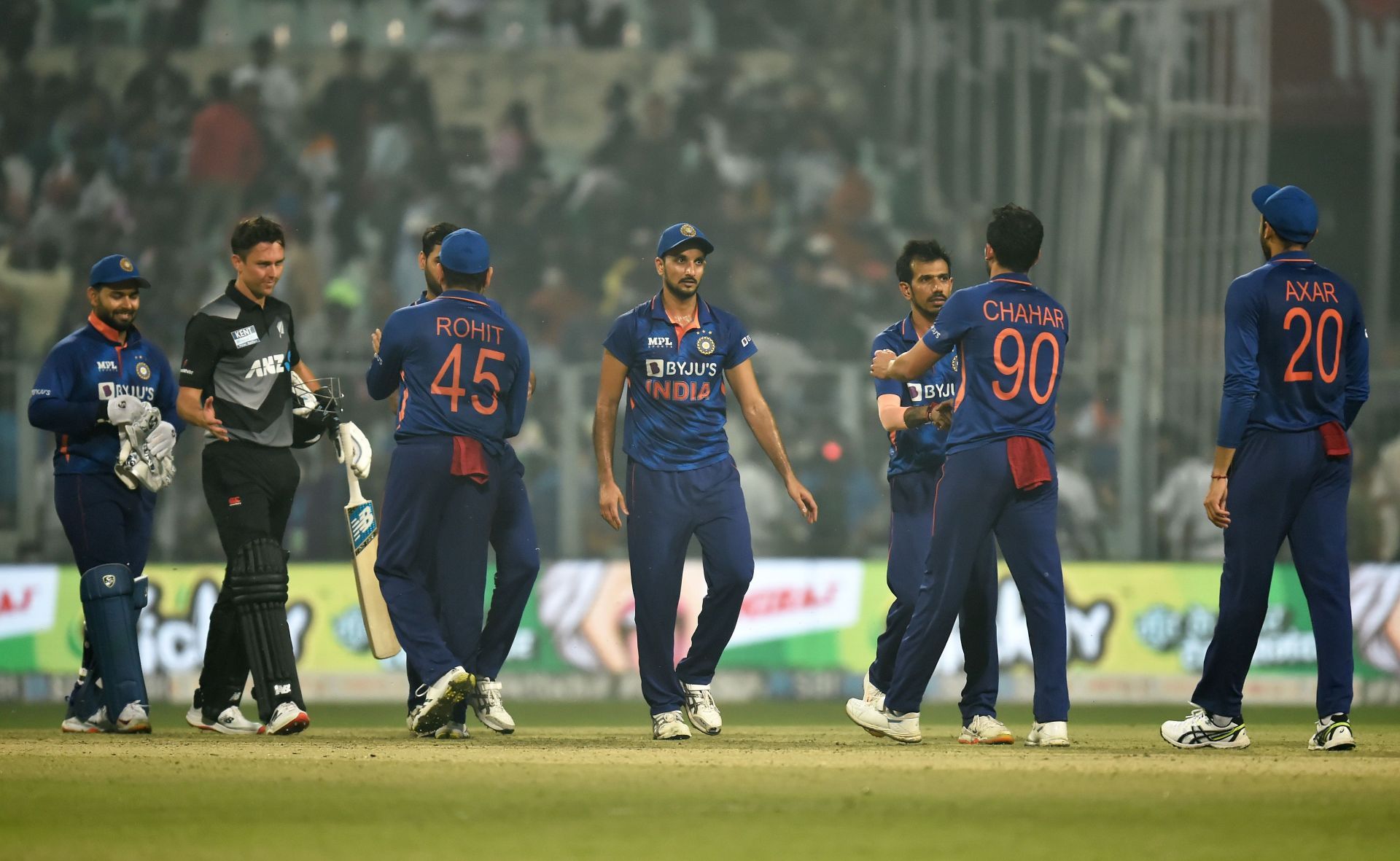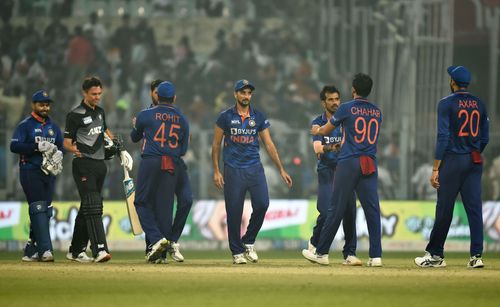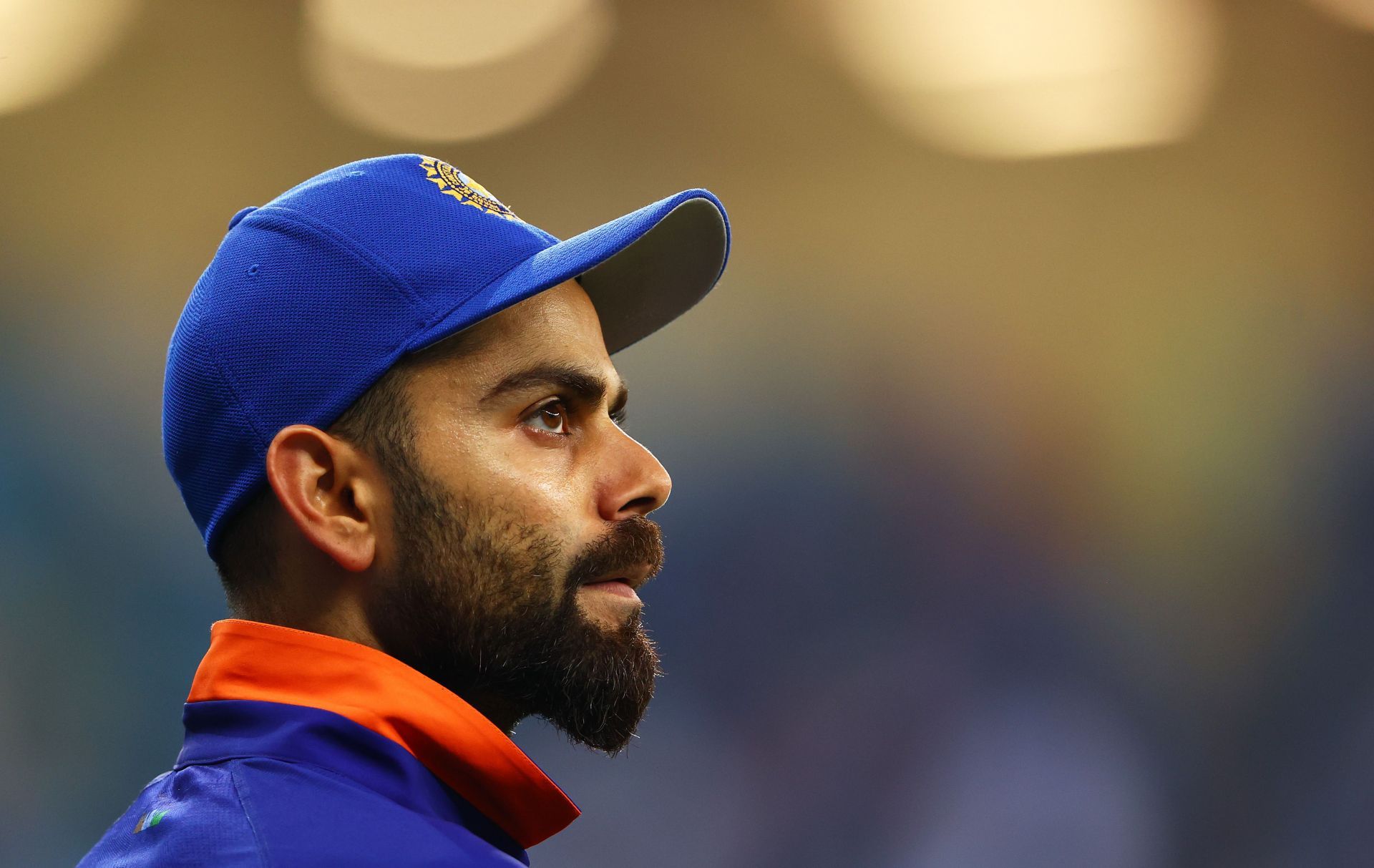
India learn faith and fearlessness are intertwined in T20Is

Faith and fearlessness – two words that don’t denote the same meaning but have often been buzz-terms in T20 cricket. At times, faith is used as a euphemism for stubbornness or more worryingly, to cover up for chinks that exist in an armour but are too proud to be acknowledged. On other occasions, fearlessness has been used to blanket over rashness, especially when talking about batting in T20 cricket.
Somewhere in between these definitions, though, is where the elixir and the ultimate formula to a successful T20 outfit lies – a place where there is just enough trust for players to be themselves but not enough to make them complacent. Also, a place where there is no fear about what the outcome could be but enough fear to not let carelessness creep into the system.
It is a fine line, make no mistake about it. It is also a line that many teams in the past have tried to tread but have dreadfully failed. In press conferences and post-match summations, lack of intent has been talked about on countless instances. Yet, not many teams have shown the gumption to actually resolve those issues and tackle an inherent problem, mindset wise.
Interestingly enough, India found themselves in a similar situation at the T20 World Cup – an event that was touted to be Virat Kohli’s crowning jewel as white-ball skipper but an event that only exposed the shortcomings of his leadership.
The first two games saw India surrender the initiative rather meekly. Against Pakistan, Shaheen Shah Afridi inflicted the early blows but the cautious manner in which India approached the rest of their innings wasn’t befitting of a side of their quality.
A match later, India never really shifted out of first gear. Had it not been for Ravindra Jadeja’s pyrotechnics at the end, the Men In Blue would’ve been defending a two-digit score in a T20 World Cup fixture.
What was more revealing was how Kohli addressed the post-match presentation, quipping that India weren’t brave enough with bat and ball. In isolation, that seems a fair reflection of a team that has simply not punched according to its weight.
Yet, this lack of bravery (or the buzzword “intent”) has pulled them down in each of their past three meetings against New Zealand in ICC tournaments. When the humbling at Manchester transpired, Kohli admitted that the Kiwis were “braver” in crunch moments.
At Southampton – the venue of the ICC World Test Championship final, the Indian skipper was quick to point out their lack of intent, especially in the second innings when New Zealand began turning the screw.
From that perspective, India ensured they weren’t partial to any particular format and that their lack of courage flowed throughout. However, with another ICC event on the horizon, this is also something they simply need to address.
Not just because it's been quite long since they’ve tasted white-ball success at global events, but also because India are too good a side to be blaming timidity each time they succumb to pressure.
Before the T20I series against the Black Caps began, captain Rohit Sharma and head coach Rahul Dravid swiftly outlined their intentions. Apart from the usual chatter around the “process”, there was another interesting point both seemed to agree on – the security that needed to be provided to the players so that their fear of failure reduces significantly.
In other words, the confidence and the faith required to instill fearlessness among a bunch that is perfectly capable of implementing that style of play.
The rubber against the Kiwis saw India set a total only once – largely because Rohit won the toss every time he walked out to the centre. But when they did, there was enough evidence that Dravid and Rohit were keen to walk the talk.
India batted first at Kolkata and convincingly won the game
On paper, India registered a 180-plus total on a relatively placid surface and at a ground where dew was rampant. However, there were enough obstacles that could’ve derailed their charge.
Post the Power Play, India lost a glut of wickets, which left Rohit waging a lone battle. Suryakumar Yadav perished to a four-ball duck. Rishabh Pant was dismissed while playing a slog sweep for the umpteenth time. And, Ishan Kishan found it wise to loosely waft at a delivery outside off stump.
A few overs later, Rohit departed too, meaning that Shreyas Iyer and Venkatesh Iyer were cast into the eye of the storm. Both took a few balls to get acclimatized to the conditions but didn’t take long before deciding to open up their shoulders.
Funnily enough, both were dismissed when trying expansive shots – shots that would’ve sailed into the stands had they connected. When Shreyas trudged back to the pavilion, India still had 23 balls remaining in their innings.
At the time, it seemed that India would be better off trying to bat the entire duration of their essay. Scrap a few singles and doubles till the 19th over and then look for a massive finish to the innings. In fact, that would certainly have been the safer approach.
Not on this occasion, though. India didn’t just keep swinging, they showcased the kind of conviction that ultimately catapulted them to 184. Deepak Chahar and Harshal Patel were the batters responsible but it was probably their cavalier approach that took the Kiwis aback.
Remember, had Chahar and Harshal gotten dismissed, there was a real chance that India would’ve been bundled out. Yet, in modern-day T20I cricket, that is perhaps a risk top teams should be willing to take.
The decisive benefit of such a philosophy is that if it works, it will, more often than not, put the game beyond doubt – as it happened at Kolkata. If it doesn’t, sides won’t really stay in contention. But against countries that chase efficiently, being in contention doesn’t count for a lot anyway.
An outfit like England spring to mind. Not only do the Three Lions continue batting in similar fashion, irrespective of the situation, they hardly make any personnel changes with respect to their batting unit.

Over the past couple of years, more teams have tried to recreate England’s gung-ho model in T20Is. India have arguably gone in the other direction. While most sides have tried to fit as many power hitters in their line-up and have tried to be adaptable, India have been fixated with anchors.
Whenever India have attempted to unfurl a firebrand philosophy, they’ve almost always faced questions around what would happen if the plan didn’t come off. The counter argument here, however is the gain that accrues when it does.
So far, the early signs are that Dravid and Rohit’s India have embraced that school of thought. Not only have they given a good account of themselves whenever called upon, they haven’t made wholesale changes to their batting unit. It could’ve been very easy to drop Shreyas Iyer after his archaic knock at Jaipur. Yet, they didn’t.
For those wondering, the propensity to stick to players, even when they aren’t scoring but are trying to be true to their approach, allows these cricketers to not be cluttered in their thinking.
T20 cricket is a format where the slightest bit of tentativeness gets punished. Hence, having a selection sword constantly hanging over your head isn’t the smartest way to go about it.
As T20I captain, Kohli accomplished a lot of things. He became the first Indian skipper to win bilateral rubbers in Australia, England, New Zealand and South Africa. Continuity in selection, though, wasn’t really something that he was blessed with.
Inevitably, when push came to shove in clutch situations, India often resorted to the more cautious approach – an approach driven by the players’ uncertainty around what would happen if they fail. Or, in Kohli’s words, put forth a version that wasn’t brave enough.
From that standpoint, it is quite revealing that this mantra of backing your players to the hilt and sticking to your approach has worked for the Chennai Super Kings and the Mumbai Indians in the IPL – teams led by MS Dhoni and Rohit.
Virat, on the other hand, hasn’t lifted the IPL trophy – both as a captain or as a player. And, unless something drastic happens, will only be eligible to taste IPL success as a player.
For a majority of the cricketing community, the T20I series between India and New Zealand was an afterthought – a rubber put together just because both teams needed something before a titanic Test tussle. India, though, might not really be minding the extra cricket, considering they have perhaps stumbled upon a formula that they should persist with.
India have learnt that faith and fearlessness are intertwined. And, as long as those two keywords are used in conjunction and not to hide other malaises, it could also be the elixir they (like several other teams) have been craving for.